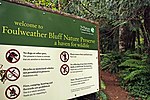Hood Canal Bridge

The Hood Canal Bridge (officially William A. Bugge Bridge) is a floating bridge in the northwest United States, located in western Washington. It carries State Route 104 across Hood Canal in Puget Sound and connects the Olympic and Kitsap Peninsulas. At 7,869 feet (1.490 mi; 2.398 km) in length (floating portion 6,521 feet (1.235 mi; 1.988 km)), it is the longest floating bridge in the world located in a saltwater tidal basin, and the third longest floating bridge overall. It opened in 1961 and was the second concrete floating bridge constructed in Washington. Since that time, it has become a vital link for local residents, freight haulers, commuters, and recreational travelers. The convenience it provides has had a major impact on economic development, especially in eastern Jefferson County.The bridge is officially named after William A. Bugge (1900–1992), the director of the Department of Highways from 1949 to 1963, who was a leader in the planning and construction of the bridge.
Excerpt from the Wikipedia article Hood Canal Bridge (License: CC BY-SA 3.0, Authors, Images).Hood Canal Bridge
Hood Canal Floating Bridge,
Geographical coordinates (GPS) Address External links Nearby Places Show on map
Geographical coordinates (GPS)
| Latitude | Longitude |
|---|---|
| N 47.86 ° | E -122.625 ° |
Address
Hood Canal Bridge
Hood Canal Floating Bridge
98364
Washington, United States
Open on Google Maps



